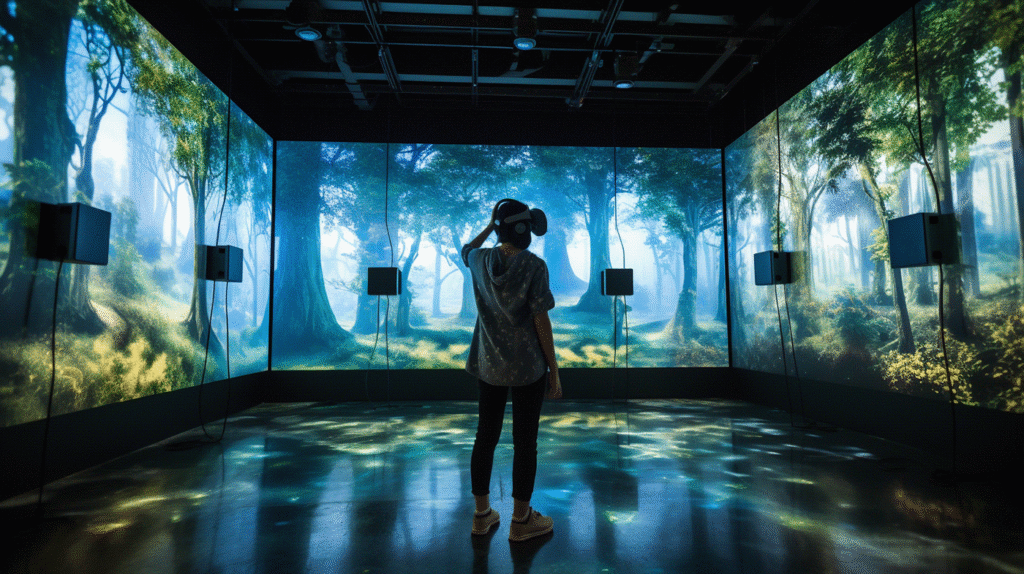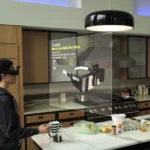You want to dive into VR without blowing your budget. You crave full-room immersion, free movement, and hands-on interaction—but you’re worried about costs. In this guide, you’ll discover proven, actionable techniques to build a room-scale VR setup on a budget in 2025. You’ll learn:

- How to choose affordable VR headsets that deliver stellar immersion
- The minimum PC requirements to power room-scale experiences
- Cost-saving tips for tracking systems, accessories, and space optimization
- A side-by-side comparison table of top budget headsets
- Step-by-step setup instructions, troubleshooting advice, and more
Let’s get you from zero to fully immersed—without the financial hangover.
Immersive Room-Scale VR Setup on a Budget
You deserve an immersive VR experience that frees you from tethered wires and small play areas. Here’s how you get it without overspending:
- Define your space: Measure a minimum of 2m×2m for comfortable room-scale VR.
- Plan your budget: Aim to keep total spend under $1,200–$1,500.
- Prioritize essentials: Headset, tracking, PC, and a clear play area come first.
- Shop smart: Hunt for bundles, refurbished gear, and seasonal deals.
By focusing on these core pillars, you ensure every dollar works harder for immersion.
Affordable VR Headsets for Room-Scale
Choosing the right headset is crucial. Below are five budget-friendly options, comparing price, tracking, and ideal use cases:
| Headset | Price (USD) | Tracking Type | Ideal For |
|---|---|---|---|
| Meta Quest 3S | $299–$399 | Inside-out, standalone & PC streaming | Casual & mixed-reality on budget (GamesRadar+) |
| PlayStation VR2 | $549 | Inside-out, tethered to PS5/PC | Console gamers & high-res visuals (GamesRadar+) |
| Valve Index | $999 (full kit) | External Lighthouse 2.0 stations | Premium room-scale & finger tracking (Space) |
| HTC Vive Pro 2 | $799 (headset only) | External SteamVR Base Stations | High-res PC VR enthusiasts (arborxr.com) |
| Pico 4 Ultra | $429 (UK only) | Inside-out, standalone | Comfortable all-in-one MR (GamesRadar+) |
Key takeaways
- Meta Quest 3S offers standalone freedom with optional PC tethering—ideal if you lack a dedicated gaming PC.
- PSVR2 pairs seamlessly with your PS5 or PC adapter, delivering crisp visuals for console users.
- Valve Index and HTC Vive Pro 2 excel in tracking precision but require base stations and a capable PC.
- Pico 4 Ultra strikes a balance between comfort and affordability—though availability may vary by region.
Budget VR PC Build Requirements
A smooth room-scale VR experience demands a capable PC—but you don’t need the top-tier rig. Here’s a budget build that delivers solid performance for under $1,200:
- CPU: AMD Ryzen 5 7600X (6-core, 12-thread) – $200 (Overclockers UK Forums)
- GPU: NVIDIA RTX 5060 Ti – $300–$350 (e.g., Stormcraft Sirius deal at $1,099 build) (PC Gamer)
- RAM: 16 GB DDR5-4800 – $60
- Storage: 1 TB NVMe SSD – $50
- Motherboard: B650 chipset mATX board – $120
- PSU: 650W 80 PLUS Gold – $70
- Case: Budget ATX mid-tower – $50
- Cooling: Stock cooler or $30 aftermarket fan
Total Estimated Cost: $1,050–$1,150
Tip: If you prefer prebuilt deals, check PC Gamer’s roundup of cheap gaming PCs under $1,000 for VR-capable systems at bargain prices (PC Gamer).
Optimizing Tracking with SteamVR Base Stations
Accurate tracking is the backbone of room-scale VR. Follow these steps to maximize performance:
- Placement
- Position two Base Stations (1.0 or 2.0) at opposite corners of your play area, elevated 2 m high and angled downward at ~30°.
- Mounting
- Use adjustable wall or tripod mounts for flexibility.
- Line-of-Sight
- Remove obstructions (furniture, décor) between stations and play space.
- Sync & Firmware
- Ensure stations are synced via wireless channels (B, C, D) per your headset’s manual.
- Update firmware using SteamVR’s device manager.
- Calibration
- Run SteamVR room setup, drawing your boundary and validating tracking with your headset and controllers.
By following these practices, you’ll minimize drift and maximize precision—even on a budget.
Enhancing Your VR Space on a Budget
You can boost immersion without spending much:
- DIY Cable Management:
- Use adhesive hooks to route your tether overhead.
- Invest in a $20 pulley kit for near-free motion.
- Acoustic Treatments:
- Reuse thick curtains or foam panels (DIY) to dampen noise.
- Lighting:
- Mount LED strips behind screens or furniture for bias lighting—reduces eye strain for $10.
- Third-Party Accessories:
- Knock-off grips and covers (under $15) can match official comfort accessories at a fraction of the cost.
- Used & Refurbished Gear:
- Check Certified Refurbished deals on manufacturer sites—Quest 3S refurb bundles often drop to $249.
These tweaks keep your wallet happy while maximizing immersion.
Comparison Table – Headset + PC Bundles
| Bundle | Headset + PC Specs | Total Cost (USD) | Pros | Cons |
|---|---|---|---|---|
| Quest 3S + Prebuilt PC | Quest 3S, Ryzen 5 5600X, RTX 3060, 16 GB RAM, 1 TB SSD | $900 | Plug-and-play, standalone & PC VR | Moderate visuals vs. high-end headsets |
| PSVR2 + DIY Build | PSVR2, Ryzen 5 7600X, RTX 5060 Ti, 16 GB DDR5 | $1,100 | Console-grade visuals, strong tracking | Requires PS5 adapter for PC use |
| Valve Index Deluxe + Mid Build | Valve Index full kit, Ryzen 7 7700X, RTX 4070, 16 GB DDR5, 2 TB SSD | $1,850 | Top-tier tracking & fidelity | High entry cost |
| Vive Pro 2 + Budget Build | Vive Pro 2 headset, B650 build with RTX 5060 Ti | $1,600 | High resolution, robust SteamVR ecosystem | Needs base stations & link box |
Frequently Asked Questions
Q1: Do I need external base stations for room-scale VR?
You only need base stations if you choose a headset with external tracking (Valve Index, HTC Vive Pro 2). Inside-out tracking (Quest 3S, PSVR2) works without external sensors—though precision may vary in low-light conditions.
Q2: Can I use a standalone headset wirelessly for PC VR?
Yes. Meta Quest 3S supports wireless PC streaming via Air Link or Virtual Desktop—no cable needed if your Wi-Fi network is robust (GamesRadar+).
Q3: What’s the minimum space for room-scale VR?
A clear 2 m × 2 m (6.5 ft × 6.5 ft) area is recommended. Smaller spaces limit freedom. Always draw your play boundary in SteamVR or Oculus settings.
Q4: Is refurbished gear safe?
Certified refurbished products undergo manufacturer testing and come with a limited warranty. They’re a cost-effective way to get like-new hardware.
Q5: How do I prevent cable tangles?
Mount a simple pulley and ceiling-mounted hook—this “overhead cable management” costs under $30 but eliminates tangled wires.
Conclusion
You now have a step-by-step blueprint to build an immersive room-scale VR setup on a budget in 2025. By selecting the right headset, leveraging smart PC builds, optimizing tracking, and making cost-saving space enhancements, you can enjoy full-body VR immersion without emptying your bank account.
Your next steps
- Finalize your budget and space measurements.
- Choose your headset bundle based on quoted options.
- Source PC components or grab a prebuilt deal.
- Set up tracking stations and calibrate your space.
- Dive into your favorite VR titles—your wallet won’t mind.
Embrace the future of gaming, training, and virtual exploration—affordably.
Additional Resources
- SteamVR Room Setup Guide
- Meta Quest 3S Deals & Bundles (GamesRadar+)
- PC Gamer: Best Cheap Gaming PC Deals (PC Gamer)
Enjoy your immersive journey—2025 awaits!


